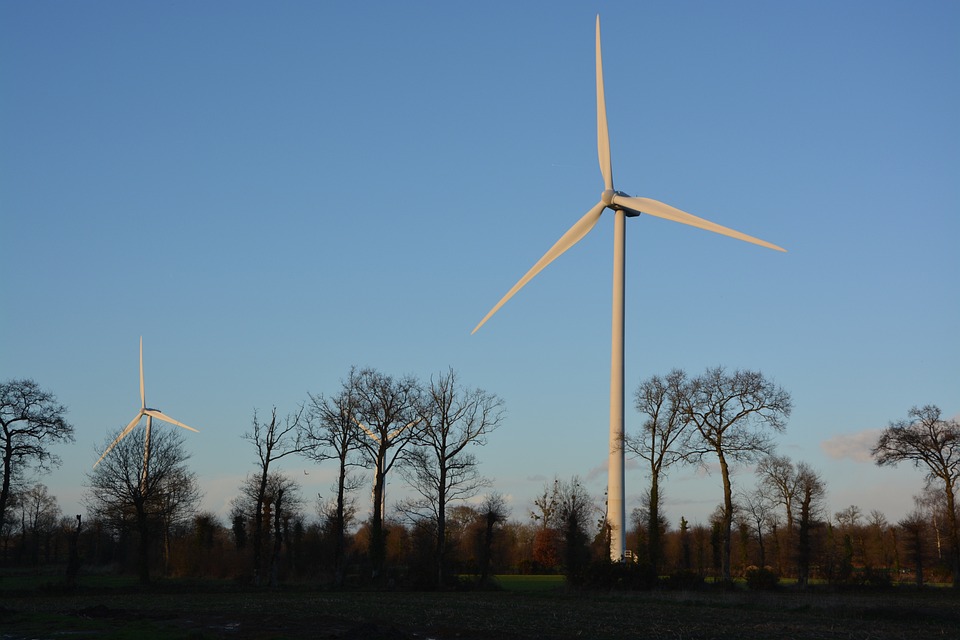[ad_1]
Clean Energy, Clear Skies: The Environmental Benefits of Renewable Power
Introduction
In recent years, there has been a growing awareness of the environmental impacts of traditional energy sources, such as coal and oil. The burning of fossil fuels for energy generation has been linked to air and water pollution, as well as climate change. As a result, there has been a shift towards renewable energy sources, such as solar, wind, and hydroelectric power, as a way to mitigate these environmental impacts.
Renewable energy sources are often touted as being better for the environment, with the potential to reduce greenhouse gas emissions and improve air and water quality. In this article, we will explore the environmental benefits of renewable power and the role it plays in creating clear skies and a sustainable future for our planet.
Reducing Greenhouse Gas Emissions
One of the key environmental benefits of renewable power is its ability to reduce greenhouse gas emissions. The burning of fossil fuels for electricity generation is a major contributor to global carbon emissions, which are the primary driver of climate change. According to the International Energy Agency, the energy sector accounts for approximately two-thirds of global greenhouse gas emissions.
Renewable energy sources, on the other hand, produce little to no greenhouse gas emissions during their operation. Solar and wind power do not rely on the combustion of fossil fuels, while hydroelectric power generates electricity by harnessing the energy of flowing water. By transitioning to renewable power, we can reduce our reliance on carbon-intensive energy sources and decrease our contribution to climate change.
Improving Air Quality
In addition to reducing greenhouse gas emissions, renewable power also has the potential to improve air quality. The burning of coal and oil for energy production releases pollutants such as sulfur dioxide, nitrogen oxides, and fine particulate matter into the atmosphere. These pollutants can have harmful effects on human health, causing respiratory problems and cardiovascular disease.
By shifting to renewable energy sources, we can decrease the emissions of these harmful pollutants and improve air quality in our communities. This can lead to tangible health benefits, such as reduced rates of asthma and other respiratory illnesses. In fact, a study published in the journal Nature Energy found that transitioning to renewable power could prevent over 15,000 premature deaths annually in the United States alone.
Protecting Water Resources
Another environmental benefit of renewable power is its potential to protect water resources. The extraction and burning of fossil fuels can have a significant impact on water quality, as pollutants from these activities can contaminate both surface and groundwater. For example, coal mining and hydraulic fracturing for natural gas have been linked to water pollution, as well as the depletion of water supplies.
Renewable energy sources, such as solar and wind power, do not require significant water inputs for their operation. In contrast, hydroelectric power does rely on water, but it has the potential to mitigate the impacts of fossil fuel extraction by providing a cleaner energy alternative. By transitioning to renewable power, we can reduce our reliance on water-intensive energy sources and protect our precious water resources.
Preserving Natural Habitats
In addition to reducing air and water pollution, renewable power has the potential to preserve natural habitats and biodiversity. The extraction of fossil fuels, such as coal and oil, often involves the disruption and destruction of natural ecosystems. For example, mountaintop removal mining for coal can lead to the destruction of forests and the contamination of nearby streams.
Renewable energy sources, on the other hand, have a smaller footprint and are generally less damaging to natural habitats. Solar panels and wind turbines can be installed on previously disturbed land, such as brownfields or agricultural areas, without the need for significant land clearing. Furthermore, these projects can create new habitats for wildlife, leading to increased biodiversity in the surrounding areas.
Frequently Asked Questions
Q: Are renewable energy sources cost-effective compared to traditional energy sources?
A: Renewable energy sources have become increasingly cost-competitive in recent years, and in many cases, they are now on par with or even cheaper than traditional energy sources. The cost of solar and wind power has decreased dramatically in the last decade, making them an attractive option for both consumers and energy providers.
Q: Can renewable energy sources provide a reliable source of power?
A: Renewable energy sources, such as solar and wind power, are variable in nature and depend on weather conditions. However, advancements in energy storage technology, such as batteries, can help to mitigate this variability and provide a reliable source of power. Additionally, a diverse mix of renewable energy sources, including solar, wind, and hydroelectric power, can help to ensure a stable and consistent energy supply.
Q: How can I support the transition to renewable power?
A: There are several ways to support the transition to renewable power. You can install solar panels on your home or business, purchase renewable energy credits from your utility provider, or advocate for renewable energy policies at the local, state, and federal levels. Additionally, you can support companies and organizations that are committed to using renewable power and reducing their carbon footprint.
Conclusion
Renewable power has the potential to mitigate the environmental impacts of traditional energy sources, such as coal and oil. By reducing greenhouse gas emissions, improving air and water quality, protecting water resources, and preserving natural habitats, renewable energy sources can create clear skies and a sustainable future for our planet. As we continue to transition to renewable power, we can look forward to cleaner air, healthier communities, and a more resilient natural environment for future generations.
[ad_2]



